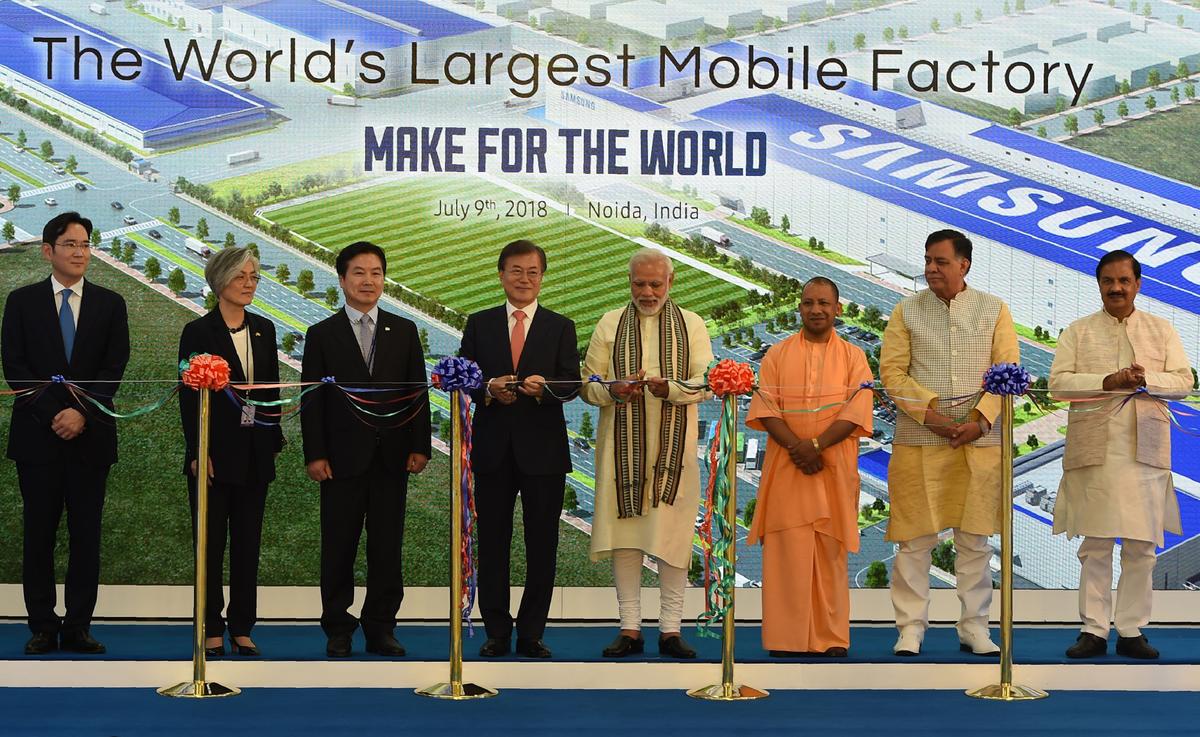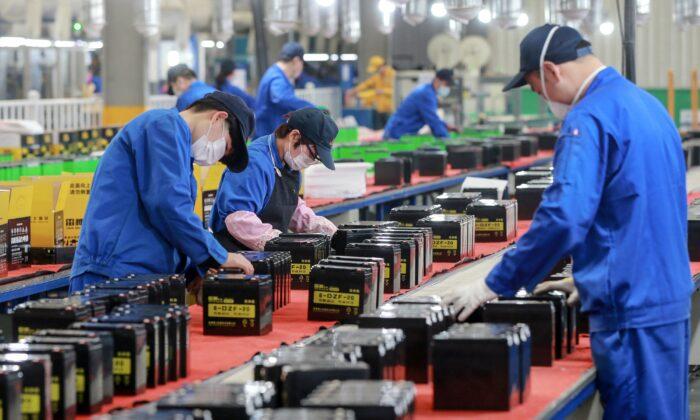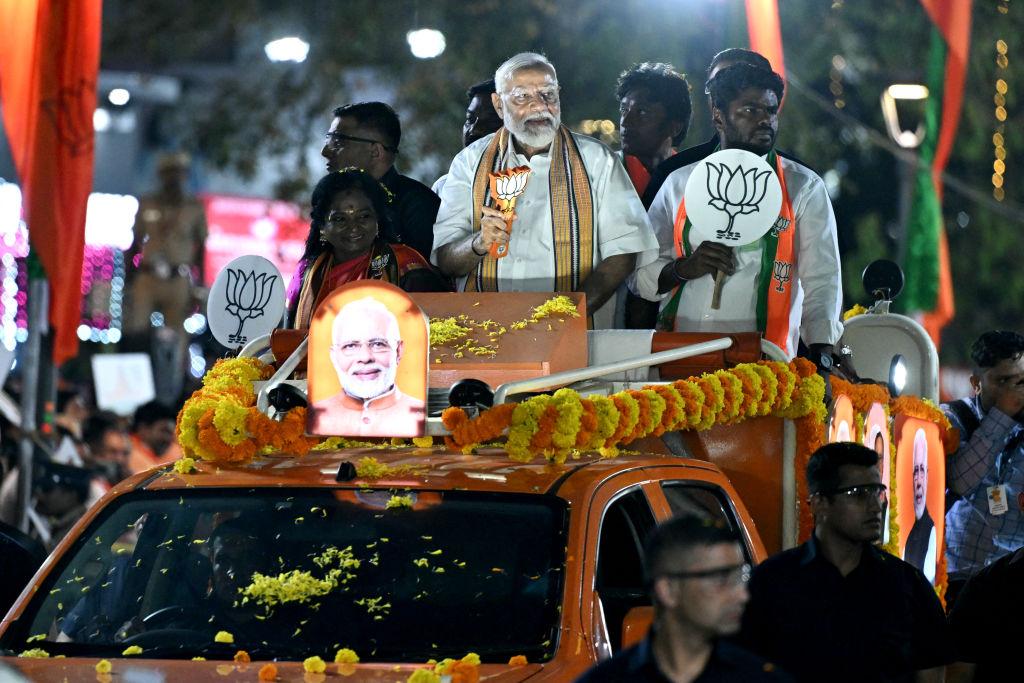NEW DELHI—The year 2021 saw China gaining a smaller share of global supply chain investments, compared with the previous year, while India turned out to be a beneficiary of global companies looking for alternate manufacturing locations.
Global trends, geopolitical rivalries, and India’s national economic policies for self-reliance are likely to ensure that this trend will continue. A global business analyst said India’s long-term success as an alternate manufacturing base for the global supply chain will depend upon the nation’s solutions for sustainable national water management.
Gopal Reddy, the founder of Ready for Climate and previously founder and CIO of Chakra Capital Partners, a long/short equity hedge fund, told The Epoch Times over the phone that India should work ahead of time to avoid repeating China’s grave water crisis, which today threatens the global supply chain.
Reddy said water is an “unseen, vital input” for all economic activity, and the lack of it in China today has pushed global supply chains over the edge.
“It’s all about water,” he said, adding it’s worth noting that a typical smartphone requires 3000 gallons of water to produce.
Reddy said India should understand how power shortfalls and structural water shortage are intimately linked, and recent discussions on the shift of global supply chains to countries like India and Vietnam should take into account that water shortages are a major long-term issue for energy markets and the global economy.
Kurth and Portafaix reiterated that the World Economic Forum (WEF) ranked water crises higher than terrorism, financial crises, and energy price shocks in its 2020 Global Risk Report.
“Businesses that manage risk well will thrive in a changing risk landscape and create trust with their stakeholders,” said the WEF in its report listing “Planet Earth” as one of its three global risk areas.
Business Out of China
Research company Gartner revealed in a 2020 survey that 33 percent of the supply chain leaders moved business out of China or plan to do so by 2023. Another study by UBS Evidence Lab found that 71 percent of the manufacturing exporters planned to move, or continued to move, some production out of mainland China in late 2020, compared with 57 percent the previous year.Kamala Raman, senior director analyst with the Gartner Supply Chain Practice said in the report that disruptions caused by the COVID-19 pandemic are only one factor in the recent broader disruptions in the global supply chains.
“Popular alternative locations are Vietnam, India, and Mexico. The second main reason for moving business out of China is that supply chain leaders want to make their networks more resilient,” said Raman, adding that the first reason is the increase in tariffs due to the US-China trade war.
Reddy said nearly 700 million Chinese live in regions that are considered highly water-stressed. The groundwater depletion in those regions, around Beijing for example, is so significant that parts of the capital city are sinking by more than 14 centimeters a year.
Reddy said for India to be an alternative to China as a manufacturing host in global supply chains, India will have to find sustainable and long-term solutions for managing its water resources.
“In agriculture, that means drip irrigation, drought-resistant strains of grains, or crops that use less water. There are a lot of things that can be done,” said Reddy.
In industrial processes, water consumption is due mainly to power generation; coal, nuclear, and natural gas power plants all consume water. Fortunately, there are a lot of developments in alternative energy pathways that use less water, according to Reddy.
“The problem is that a lot of these alternative energies, technologies don’t provide high-reliability power that you need to run industrial processes,” said Reddy, adding that China has a lot of alternative energy production but it’s not concretely helpful in supply chains because these energy sources are variable.

Sustainable Solutions for India
Indian Prime Minister, Narendra Modi said in his virtual address to the World Economic Forum’s Davos Agenda 2022 on Jan. 17 that this is the best time to invest in India.“We are working relentlessly to address each and every challenge. Today, India is promoting ‘Ease of Doing Business. Government control is being reduced. By simplifying and lowering its corporate tax rates, India has made it the most competitive in the world,” Modi said.
In their report, Kurth and Portafaix said water is a dynamic resource as its amount changes daily and managing water is thus not easy. A water management regime is “effective” only if it “protects local resources and far-reaching supply chains. The question is how to develop such a regime.”
The BCG analysts said even most “forward-looking organizations” view water risk as pertaining to their use, and misuse, of water that harms the environment and local communities. But more than half don’t understand that water and its management can impact operations, supply chains, or business results.
They suggested a “three-pronged assess-and-mitigate approach” for companies to mitigate the water crisis that includes carefully mapping supply chains to identify how critical each supplier and transport provider is to the continuity of a business.
Reddy said that, as India sets out to lay a roadmap for industrial self-reliance and works to be an attractive destination for global investments and global manufacturing, it should keep a tap on the promising technologies that ensure “low carbon intensity, low water intensity, and high dependability.”
“There are some very promising technologies on the roadmap, in a lot of different places in the world. As of now, none of these products are ready for mass deployment. And so it’s probably at least another three to four years before you get the technology to really enable low carbon intensity, low water intensity, and high dependability,” he said.
Reddy gave the example of a company called Net Power that redesigned the natural gas power generation cycle. The process doesn’t consume any water because it uses carbon dioxide as the heat exchange method.
“There’s carbon dioxide produced, but it’s 100 percent pure carbon dioxide. And so, it’s much easier to capture and store than it is to work with carbon dioxide from a coal plant,” he said.
He gave the example of other energy technologies, but said the pilots of these will be coming up in 2024-25 and India should work ahead of time on them.
“There are multiple companies working on megawatt-scale energy storage, not using lithium-ion batteries; using different chemistries that can store energy for long periods of time at that high density. If you’re able to do that effectively then, all of sudden, wind and solar can be made to be useful generation sources. That can be 100 percent, uptime and reliable, and again, these are very promising technologies, but a lot of them are still very, very early,” Reddy said.






Friends Read Free